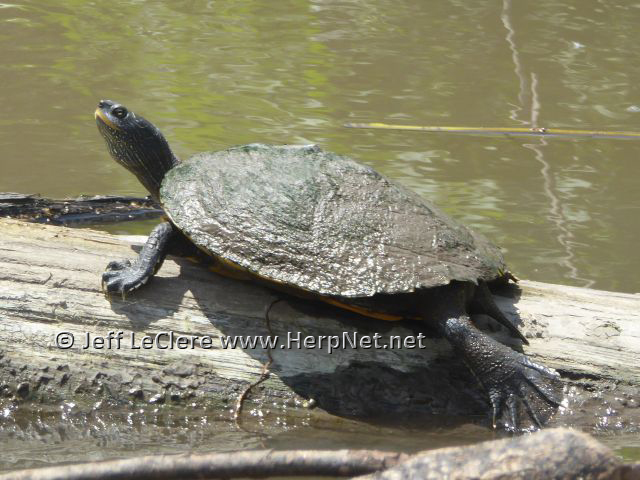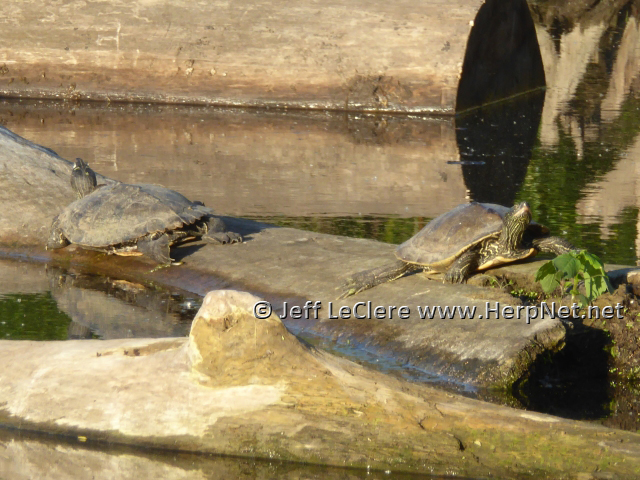False Map Turtle (Graptemys pseudogeographica)
by Jeff LeClere
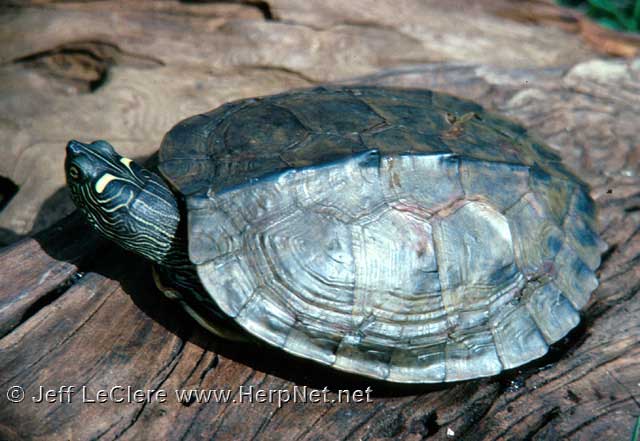
Status
PROTECTED and Species of Greatest Conservation Need. Protected, except from the Mississippi River and its connected backwaters. Here, it is legal to take with a valid fishing license. These turtles may be trapped, or taken by hand, hook and line, or turtle hook. The possession limit 100 pounds for live and 50 pounds for dressed turtles.
Description
This is a medium to large sized Iowa turtle that grows 5 to 10 inches carapace length. The shell is dark brown, olive, or black. This turtle gets its name from the light yellow lines that form a reticulated or map like pattern on the back, but this pattern is usually obscure on adults. Old females have dark blotches on the back and plastron. There is a vertebral keel on the back that is rather prominent even in adults. The marginals on the rear of the carapace are serrated. The plastron is dull yellow with black lines and swirls. The head and limbs are black or dark olive. There are light yellow lines on the head and limbs. A backwards L is present behind each eye. There are no large blotches or spots found on the head, and three neck lines reach the eye. This distinguishes false map turtles from all our other map turtles.
Females grow much larger than the males. Adult males have long claws on the front feet, and a long, thick tail with the cloacal opening past the edge of the carapace. Young have brighter shells and markings, a dark pattern on the plastron, and a pronounced vertebral keel.
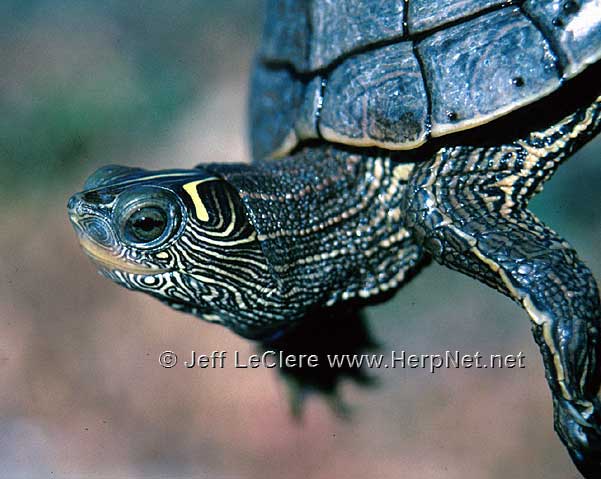
Subspecies
The northern false map turtle, Graptemys pseudogeographica pseudogeographica, is the only subspecies found in Iowa. May hybridize with other map turtle species.
Range
The false map turtle is found in the Mississippi and Missouri Rivers in Iowa. They extend west into Iowa along the large rivers from the Mississippi. In some rivers, they travel several counties into the state. I have found adult specimens in Linn County. In the Missouri River, they seem a little more restricted and do not invade very far from the west (Vandewalle and Christiansen, 1996).
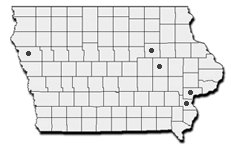
Habitat
This turtle is often found in slow portions of larger rivers in Iowa. Lakes and oxbow ponds are utilized only when close to a good sized river.
Habits
False map turtles have a shorter active season when compared to some other Iowa turtles. They are active from April to September. They are diurnal and spend a considerable amount of time basking. They forage for short periods during the day. They are very aquatic and do not roam far from water. They bask on anything above the water as long as it is away from shore in deep water. Snags and fallen trees with many limbs provide ideal basking areas and a large number of turtles may bask at this site. Approach very slowly and quietly as these turtles are extremely wary. If one dives, they all dive. The turtles remaining (if any) are the painted turtles. They resurface fairly quickly, but will remain very cautious and in the water until the danger has past.
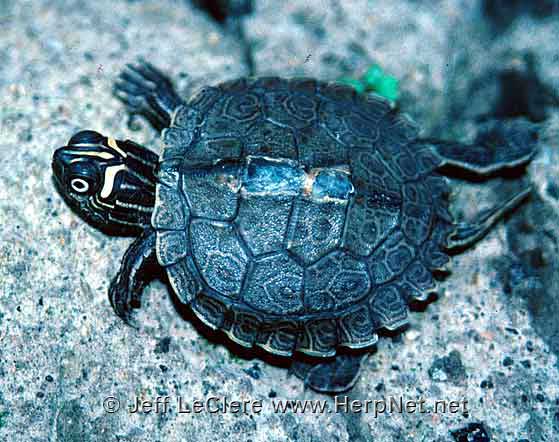
False map turtles breed in spring, and females may deposit three clutches of eggs a year (Ernst, Lovich, and Barbour, 1994), but Iowa specimens probably produce only one or two. They nest in late May through June and again in July. They usually do not migrate long distances to lay eggs. Females may dig a few false nests before actually depositing 12 to 22 eggs. They often nest on sand bars, where possible. The young emerge in August or September or they may overwinter in the nest (Vogt, 1981). They mature at about 14 years of age (Ernst, Lovich, and Barbour, 1994).
Food
False map turtles feed upon a large amount of aquatic insects. They also consume aquatic plants, fish (especially dead fish), crayfish, and other aquatic life.
